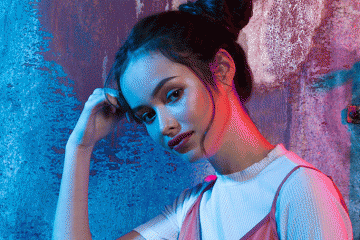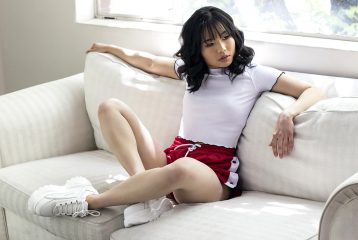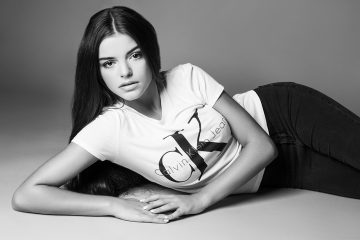The Newbie's Overview to Product Photography
If a photo deserves a thousand words, a spectacular product image deserves a thousand site sees. Although I do not have data to support that declaration (yet), product photography can be incredibly beneficial to your ecommerce web site strategy.

To reach your target market participants that choose buying online, you also need to give your target market clear, distinctive photos of your items.
Yet product photography isn't as basic as directing and also shooting. Also the most standard products require the proper tools, lights, and room to generate gorgeous pictures that sell buyers right from the acquisition page.
6 Product Photography Tips (and Examples) for Taking Photo That Sell
Here are the pointers, examples, and products you'll need to properly picture and also market your items in a manner that makes your site visitors as well as potential customers wish to transform.
1. Do not be afraid to utilize your mobile phone's cam.
This is the part where I'm meant to convince you to buy a premium, 50-megapixel (MP) camera with a 100-millimeter screw-on lens. But I'm not mosting likely to do that.
If you currently own a camera that fits this summary, make use of it. But also for many kinds of items, it's completely appropriate to shoot product pictures on a mobile phone.
More recent smart devices boast effective cam lenses and setups that enable you to enhance your shots for the different types of light and settings you could fire in.
If you need a lot more persuading, simply check out Apple's Shot On An apple iphone project and also the pictures that have actually arised from it throughout the years such as this set:
2. Fire from a tripod for photo consistency.
Prior to clarifying tripods, I'm obligated to begin with a cardinal guideline: Do not prop your phone versus something strong to intend your lens toward the subject.
It's simply too easy for this makeshift setup to slide about throughout the shoot as well as trigger inconsistencies in your photos' appearance. If you relax your cam on, say, a pile of books, simply make sure this arrangement does not transform throughout the shoot.
There's no harm in holding your camera yourself when shooting simply a couple of product pictures for your ecommerce web site. However as your business grows, as well as you take more images of even more products, it can be hard to standardize the product's alignment in each photo when shooting handheld.
To ensure uniformity throughout your items, you'll require a tripod. And fortunately, getting one isn't always the large, industrial-sized investment it utilized to be.
Here are 2 sorts of tripods to think about.
Conventional vs. Versatile
This is a tradition tripod-- there are typical tripods readily available for both cameras as well as smartphones.
A adaptable tripod can be manipulated in a variety of ways. You can bend its legs and also put it on different surface areas to get the angle you need.

Mobile Grip
There's commonly a screw on the top of your tripod which attaches to your camera to hold it in position. The underside of many professional-grade video cameras has a screw hole just for this function, however smart devices can make use of the following adapter:
The adapter grasps the sides of your smart device and can screw into either type of tripod, permitting you to operate the electronic camera manages with the phone display encountering outward as well as toward you.
Once you establish which install you'll need, set it up before your product, as well as consider placing three pieces of tape on the ground to mark where you want to maintain each leg of your tripod throughout the shoot.
3. Select all-natural light or artificial light.
Never ever undervalue exactly how certain types of light can enhance (or impede) your product photography. Keep in mind, purchasers obtain the best check out an product personally, where they can see every little thing they require to before buying. The best lights setup aids you disclose those essential decision-making product attributes when all web site site visitors have to go on is a photo.
A single lighting setup may not help every product-- a illumination arrangement that works for some items might weaken the appearance of others.
There are 2 sorts of light you can choose as your main light source: natural and also synthetic light.
Natural Light
All-natural light describes sunlight-- basic as that. It's likewise known as "soft light" due to the fact that the sunlight casts a bigger, softer range of light than, claim, a lamp radiating straight on the product. Ecommerce product shots thrive in natural light if:
The product is shot outside or implied to be utilized outside.
The product is utilized by, worn on, or shot with a person ( individuals often tend to look much better in all-natural light).You're trying to emphasize the product's environments, as opposed to particular attributes of the product.
Right here's an example of a shot making use of all-natural light:
Synthetic Light
Artificial light includes candle lights, fire, as well as extra typically, light bulbs. It's additionally described as " tough light" due to the fact that it generates a smaller sized yet more focused light surface. This type of light satisfies items with physical information that require to be highlighted to excite an on-line customer.
As a general policy, adhere to just one sort of light per photo-- all-natural or man-made. Including all-natural light to an synthetically lit photo can soften a product that's indicated to look sharp, as well as adding man-made light to a naturally lit photo can develop a product that's meant to look soft. campaign photographer gold coast You don't wish to enter your own method.
4. Fill up or bounce your light to soften shadows.
Whether you make use of all-natural light or man-made light, you'll need to reduce the shadows that any type of prospective tough light casts on the opposite end of a product.
There are three ways to do this:
Fill up Light
Consist of another, less-intense light source to supplement your primary light. This extra light is called your fill light as well as is made use of as a counterbalance to soften the all-natural darkness your major light produces behind an item.
To do this, position your fill light contrary your major light so your product sits in between both light sources.
Flashbulb Bounce Card
A bounce card, or reflector card, is a tiny card that " mirrors" or "bounces" the major light back onto the surface below your product to decrease darkness.
Some bounce cards affix to the flashbulb of a professional video camera lens to diffuse the light from the electronic camera's flash. This card sprinkles a softer light onto the topic from above your set-- rather than directly at it-- so you don't have lengthy darkness trail behind the item you're firing.
Standalone Bounce Card
If you're shooting from a smartphone, a flashbulb bounce card isn't an option, given that you do not have a physical flash you can attach it to. Rather, make your own standalone bounce card positioned contrary your primary light.
For newbies to product photography, this bounce card can effectively change your fill light, which counters the tough light from the camera flash or lamp that's encountering towards the front of your product.
5. Make use of a move or portrait mode to emphasize the product.
There isn't one right means to place your product, lights, and bounce cards-- they can alter drastically depending upon your history. However do not choose a background based upon what's most convenient advertising campaign photography to produce. Histories need to appear like how you want your buyers to view your product when watching it online.
Consider initially whether you would certainly like a white background or a much more dynamic, real-world history. There's an very easy way to attain each one.
White Background: Sweep
For white backgrounds, it's not as simple as establishing a table against white drywall. Also smartphone video cameras can get little acnes on a white wall that you wouldn't discover with the naked eye. To catch a excellent white background without any corners or acnes, utilize a sweep.
A sweep is a huge bendable sheet of paper, whose bottom acts as the surface area underneath your product and then curves up right into a white wall surface behind the product.
On video camera, the sweep's contour is unseen, highlighting essential product information as well as permitting the product to own all of a site site visitor's focus.
Real-World Background: Portrait Mode
Dynamic, real-world histories are very appealing when shooting items that have a certain usage or are being designed by a individual-- as you saw in the picture of the brief-case previously in this guide.
But, it's easy for a real-world background to take the emphasis of the photo, making it vague which item in the photo you're really offering.
Offer your product depth and emphasis with picture mode, a image setup on many professional electronic cameras, and additionally readily available on numerous brand-new smartphones. This setup blurs the background so the context of the product is clear but not completing versus the product itself.
Below is a very incredible photo of a HubSpot pen absorbed picture setting on a Google Pixel 2 (I took this picture myself). You can tell the pen remains on a workdesk with a computer system behind it, however the pen is still the centerpiece for viewers:
6. Fire a variety of pictures.
My last ecommerce photography suggestion to you is to not quit at one photo per product. Just as your customers look, hold, utilize, and also try out merchandise in a shop, your website should fire a selection of images to imitate this really experience.
If you're shooting garments, as an example, record the garment of garments alone-- that is, expanded on a white surface area-- along with on a mannequin whose color contrasts the shade of the product.
Then, for additional pictures, have the clothing modeled on a individual, allowing you to take images of the product from the person's different poses and also angles.
Product Photography Set Up
Next off, let's summarize what we just obtained-- here's a checklist of fast product photography set up ideas that you can describe and also share on your group:
• Choose a camera-- whether or not that implies utilizing your smart device.

• Choose natural or artificial illumination-- think of which option is best for your product and atmosphere.
• Determine whether you'll load or bounce light.• Select sweep or portrait mode.
• Take numerous various photos to use your viewers range.
Begin With Your Product Photography
Don't feel obligated to purchase every tip as well as tool at the same time. Apply these product photography suggestions slowly to see what makes your shop look the most nice, and also alter your technique as your photography chops get better.